For previous issues see: #4, #3, #2, and #1.
—
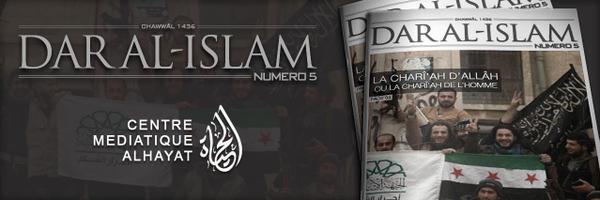
The Islamic State — “Dār al-Islām Magazine #5″
______________
To inquire about a translation for this magazine issue for a fee email: [email protected]
Category: Belgium
The Clear Banner: Belgian Fighters In Syria and Iraq – November 2014
NOTE: For prior parts in the Clear Banner series you can view an archive of it all here. Also for earlier updates on Belgian foreign fighters see: September 2013, January 2014 I and II, and May 2014.
—
Belgian Fighters In Syria and Iraq – November 2014
By Pieter Van Ostaeyen
Some demographics:
Islam is the largest minority religion in Belgium, it is estimated that about 6% (about 630.000 people) of Belgium’s total population are Muslims. In the 1960’s, when Belgium still was recovering from the total devastation of World War II, the country invited thousands of Moroccan and Turkish immigrants to work in the heavy industry which at that time dominated the Belgian economy. Most of these unschooled people had relatively well-paid jobs in the steel industry or coal mines. The guest-worker program was abolished in 1974, yet a lot of these people stayed in Belgium and brought in their families taking use of the family reunification laws. Today the Muslim population keeps on growing due to marriage migrations.
In 1974 Islam was officially recognized by the Belgian government as a subsidized religion; from 1996 onwards the Belgian Muslim community has been represented by the Muslim Executive of Belgium.1 Although this first generation of Muslims seems to have integrated quite well in Belgium, this surely doesn’t stand for their children and grandchildren. Cities like Antwerp, Mechelen, Vilvoorde, and Brussels now have important minorities of descendants of these guest-worker immigrants. As such one would say this isn’t problematic at all, taking into respect on how their parents and grandparents managed to build a career and family.
However, in the 1980’s and 1990’s Belgium started facing increasing problems and mishaps with its Muslim immigrant community. Cities like Mechelen in the 1990’s were known as hubs of petty theft and drug dealing (especially by Moroccan Berbers dealing hashish). More and more of these youngsters were cruising the city with expensive cars like BMW’s and Mercedes’s. It was commonly known these cars were paid with drug-money. At that time, the city of Mechelen was referred to as ‘Chicago at the river Dijle’2, due to its extreme crime rates. Other Flemish cities were facing the same problem. In Antwerp the district of Borgerhout was known as Borgerokko because of its high amount of inhabitants from Maghrebi origin. Brussels, Belgium’s capital, had entire no-go zones. It is in this climate of fear and mutual mistrust that extreme right wing parties like Vlaams Blok (now Vlaams Belang) thrived. On the federal elections of Sunday November 24th, 1991, out of the blue Vlaams Blok gained around 6.5 % of the votes. The tone of voice was set for the years to come; using slogans like ‘adapt or get lost’, Vlaams Blok profited highly from the general mistrust amongst the Belgian public towards the Muslim community.
In the course of the next few years Vlaams Blok started building up its anti-Islamic theme, criticizing Muslims on head scarves, the slaughter of sheep on ‘Eid festivities and the fact they didn’t manage to integrate in our society. They easily disregarded the fact it was mainly because of political parties and narratives as their own that the Muslim society in Belgium had little or no chance to assimilate or let alone integrate. In the course of the next few years Vlaams Blok was forbidden and reappeared as Vlaams Belang. As such the name was dropped but the rhetoric remained the same; intolerance and latent racism in Flanders grew steadily.
It should be noted that well before Belgium was confronted with its huge amount of fighters engaged in the war in Syria (and later Iraq), the country already was a main supplier of Jihadist Fighters. On September 10th, 2001, the suicide attack on Ahmed Shah Masoud, leader of the Northern Alliance in Afghanistan was conducted by a Belgian Muslim. And even before 9/11 Belgians played a quite important role in international Jihad. Several Belgians were engaged in GICM (Groupe Islamiste Combattante Marrocaine) and GIA. Shaykh Bassam al-Ayashi, the oldest Belgian fighter in Syria, who once was suspected to be a main al-Qaeda recruiter now is leading his own little branch of Suqur as-Sham in Northern Syria.
As one of the main reasons for all, these Belgians involved all refer to the Belgian policy on its inaptitude to integrate the Muslims in our democratic society. These guys don’t see us as being democratic; they rather see how Muslims are being oppressed on what they consider to be their basic rights. The fact that Belgium forbad the face-veil or Niqab, headscarves are forbidden in schools and in public service, next year private Halal-slaughter will no longer be allowed, and so on. It is a message even confirmed by Sharia4Belgium’s spokesman Fouad Belkacem. In a statement he recently published from prison, he states: If I look back upon these days I think about the arrogance and the deep-rooted islamophobia of the Belgian State […] The head-scarf ban in 2009 hit us like an atom bomb […] For almost 50 years we saw humiliated Muslims beg for basic rights […].3
It is in reaction to these general sentiments that Sharia4Belgium was founded on March 3 2010. The group was inspired by other European Salafi groups that already existed such as Islam4UK, at that time led by the radical Islamist preacher Anjem Choudary. In its founding notes Islam4UK stated: [the group was] established by sincere Muslims as a platform to propagate the supreme Islamic ideology within the United Kingdom as a divine alternative to man-made law, and to convince the British public about the superiority of Islam […] thereby changing public opinion in favor of Islam in order to transfer the authority and power […] to the Muslims in order to implement the Shari’a (in Britain).4 A very similar discourse was spreading among radical Muslims in Belgium. As such, Sharia4Belgium copied a lot of the rhetoric of Anjem Choudary and other inspiring leaders of Islam4UK. Sharia4Belgium denounced democracy and stated it wanted to introduce the Shari’a in Belgium.
Fouad Belkacem explains in his statement who is leaving for Jihad in Syria:
A. The Migrants for the case of Allah. These believers seek to please Allah wherever possible. They believe that the highest value after worshipping the unity of Allah is the blessed Jihad. Jihad doesn’t mean Holy War, this term stems from Christianity and its Crusades. May Allah give this brothers what they seek.
B. The Migrants against suppression. They are the ones who left because of the injustice they daily lived in Belgium. A lot of practicing Muslims every day feel the injustice from the government and society.
C. A new live, a new beginning. A lot left for Syria to start a new life. The fact that a lot of youngsters prefer to live under bombs than in “hospitable, warm Flanders” as such is another proof against the government. Everything seems better than Belgium.
D. Sense of justice. The last group is that of the pious Muslims who could no longer bear the injustice done to their brothers. They want to contribute, how futile it may be.5
This general resentment against Belgiums policy against its Muslim community is also confirmed by the Belgian researcher Montasser AlDe’emeh. In the Belgian weekly Knack of September 23, 2014, Montasser published part of his interviews with a Belgian Islamic State fighter:
In Belgium daily they make new laws against Muslims. A Niqab ban, a headscarf ban and soon maybe a ban on beards and some Mosques? Why can’t our sisters wear a headscarf? […]Politicians, teachers at school, people at work, they
The Clear Banner: Update on the Belgians in Syria
NOTE: For prior parts in the Clear Banner series you can view an archive of it all here.
—
Update on the Belgians in Syria
By Pieter Van Ostaeyen
About a month before the elections in Belgium, the government released a new official number of Belgian fighters engaged in the Syrian civil war. This article was posted by most large Belgian newspapers (De Morgen, De Standaard and others based on La Libre Belgique). It clearly states that Belgian officials estimate the number of Belgian fighters in Syria around 150. It is quite obvious however that the Belgian government presents us the more merrier version.
As for my own research, my numbers are close to 400 (and according to insiders with close ties to the Moroccan community in Belgium, there are even more of them). In this post, I will not identify any off these individuals, yet I will present a statistical overview of known facts. Important to know that all this is based on publicly available information on traditional and so called “new” social media channels as well as newspapers, magazines, and more importantly Twitter and Facebook. This research was in close cooperation with Guy Van Vlierden, a Belgian journalist for the newspaper Het Laatste Nieuws. Other people who contributed are Montasser AlDe’emeh and Aaron Y. Zelin.
It must be noted that the total number of 399 Belgians in Syria includes all reported cases. So, it might be possible that some are double. Furthermore all killed, wounded and returned are included in this grand total. As such 399 would be the upper limit as for the lower we opt to choose the number Montasser AlDe’emeh uses in his research, about 220.
Of this sample we fully identified 102 persons; this means we know them by name, age, town of origin, affiliation in Belgium and Syria. 35 further anonymous persons are known by their kunya or “nom de guerre”. At least 18 of the Belgians in Syria are women. The oldest fighter is Bassam al-Ayashi (68), the youngest one (left early 2014) is Younes Abaaoud (just 13). The average age of the Belgians is 24,5. At least 14 of them are minors.
Here are some numbers:
Table 1: Total number of Sharia4Belgium fighters and group affiliation in Syria:
|
Total |
Identified |
Sharia4Belgium |
ISIS |
Jabhat an-Nusra |
|
399 |
102 (+ 35) |
59 |
20 |
1 |
Table 2: Belgian fighters and group affiliation in Syria:
|
Total |
ISIS |
Jabhat an-Nusra |
Suqur as-Sham |
Other |
|
399 |
39 |
8 |
10 |
2 |
For 136 of these individuals we know where they originated from:
- Brussels: 48
- Antwerp: 43
- Vilvoorde: 22
- Mechelen: 14
- Maaseik: 3
- Genk: 2
- Beringen: 1
- Deinze: 1
- Willebroek: 1
- Turnhout: 1
- Verviers: 1
- Liège: 1
Quite striking in these numbers is that most of the Belgians are coming from the bigger cities in Flanders: Antwerp, Mechelen and Vilvoorde, and the capital Brussels. Only two known Walloon fighters in the entire population might mean that the problem of foreign fighters in Wallonia (Southern Belgium) is insignificant or that we miss some crucial data on this region (I actually go for the latter).
54 of the Belgian fighters have been located in Syria:
- Aleppo: 30 (17 ISIS fighters, 8 of them killed or returned, 10 probably in ar-Raqqa province in Eastern Syria now)
- ar-Raqqa: at least 12 (including the ten probably coming in from Aleppo)
- Idlib: 11
- Homs: 6
- Latakkia: 3 (including one fighter killed in August 2013)
- Damascus: 2
- Saraqib: 1 KIA (Abu al-Bara’ al-Baljiki)
At least 29 fighters returned home after a few weeks or months of presence in Syria:
Table 3: Returned from Syria (by affiliation):
|
Sharia4Belgium |
ISIS |
Jabhat an-Nusra |
|
10 |
8 |
2 |
Table 4: Killed Belgian fighters:
At least 27 fighters are killed in action, 9 of them known members of Sharia4Belgium:
|
Total KIA |
ISIS |
Jabhat an-Nusra |
Suqur as-Sham |
Unknown (probably ISIS) |
|
27 |
8 |
8 |
2 |
10
|
Conclusion:
I am not going to elaborate on this: 399 individuals, 57 killed or returned, leaves us with about 342 Belgians fighting in Syria. Even if we use the low estimate by Montasser there would be around 220 Belgians still active in Syria.
PS: As from this day I will give a monthly overview of Belgian fighters in Syria.
GUEST POST: Belgium’s Syria Fighters ~ An Overview of 2012 and 2013 (II)
NOTE: As with all guest posts, the opinions expressed below are those of the guest author and they do not necessarily represent the views of this blogs administrator and does not at all represent his employer at the Washington Institute for Near East Policy.
Jihadology.net aims to not only provide primary sources for researchers and occasional analysis of them, but also to allow other young and upcoming students as well as established academics or policy wonks to contribute original analysis on issues related to jihadism. If you would like to contribute a piece, please email your idea/post to azelin [at] jihadology [dot] net.
Click here to see an archive of all guest posts.
–
Belgium’s Syria Fighters ~ An Overview of 2012 and 2013 (II)
By Pieter Van Ostaeyen
Part II : Belgian Foreign Fighters ~ Some Stories
In this second part I will focus on some of the most remarkable stories of the Belgian fighters in Syria. Again all this information is publicly available on a variety of Facebook-accounts used by the Belgians to spread their message. A lot of this information was gathered by Belgian journalist Guy Van Vlierden for a piece in Belgian newspaper Het Laatste Nieuws on January 14. Another very interesting piece was published in Le Vif on January 24. We will go in depth on the stories of ten of the Belgians. (Other, older, stories of Belgian fighters in Syria can be found here)
1. Te Ou[1]
This 19 year old boy from Vilvoorde currently resides in Aleppo. He went to school in KTA Pro Technica in Halle (nearby Brussels) before he left for Syria where he currently fights for ISIS. He must be one of the most “classy” Muhajirun as can be seen on the following pics from his Facebook-account.
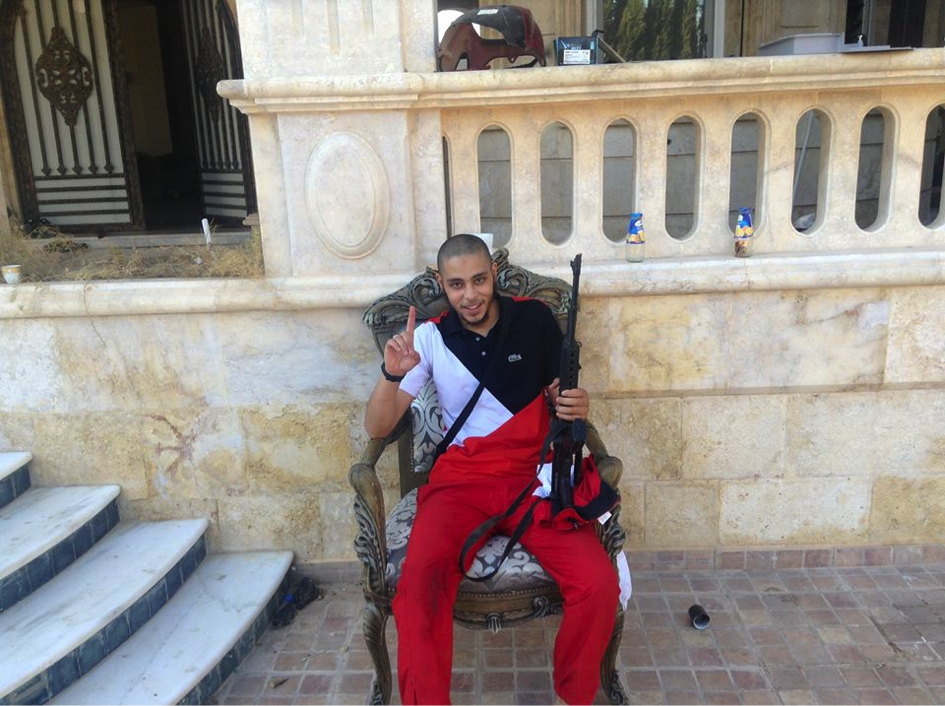
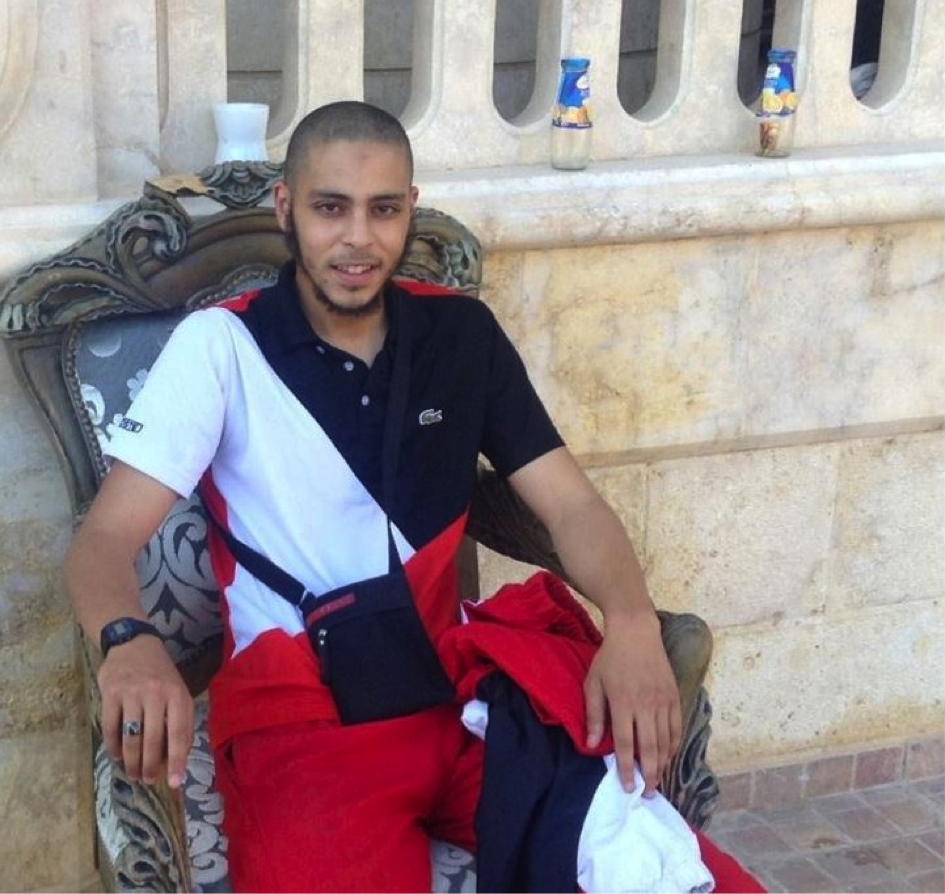
2. Abu Houdaifa Ahmed
His family originates from Oujda in Morocco. It can be presumed that his family is thus from Berber (Tamazigh) origin. He is 21 and went to school in Virgo Fidelis in Vilvoorde and Campus Wemmel. One of his brothers, known as Younes Abu Moujahid, declares he is currently in Afghanistan. Abu Houdaifa presumably is in Aleppo-province with the majority of the other Belgian fighters.

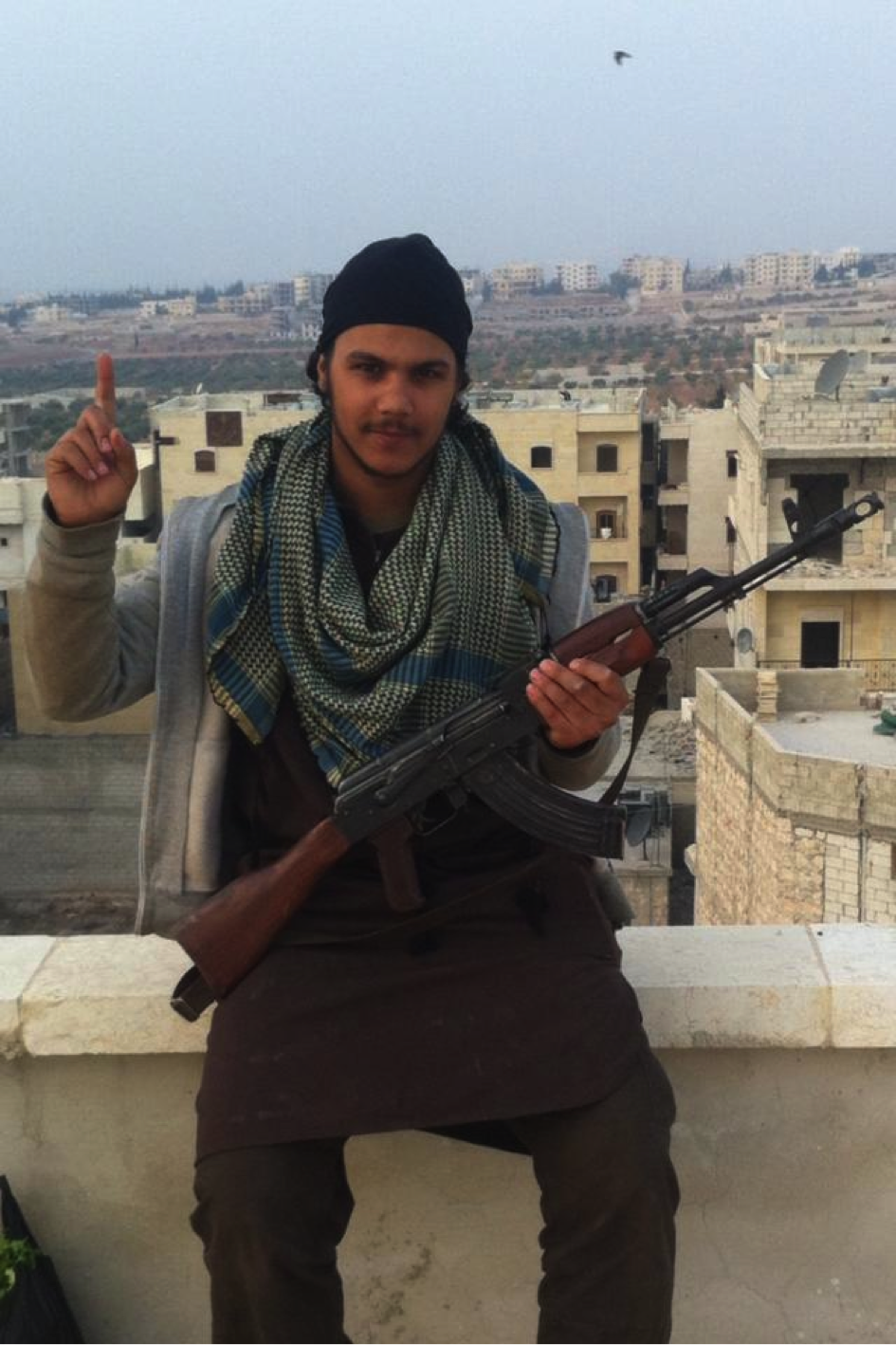
3. Abu Sulayman al-Muhajir
Lives with his wife in Aleppo-province since August 2013. He is from Algerian origin. One of his brothers, Abu Muhammad or Abu Muhajir also fights in Syria.
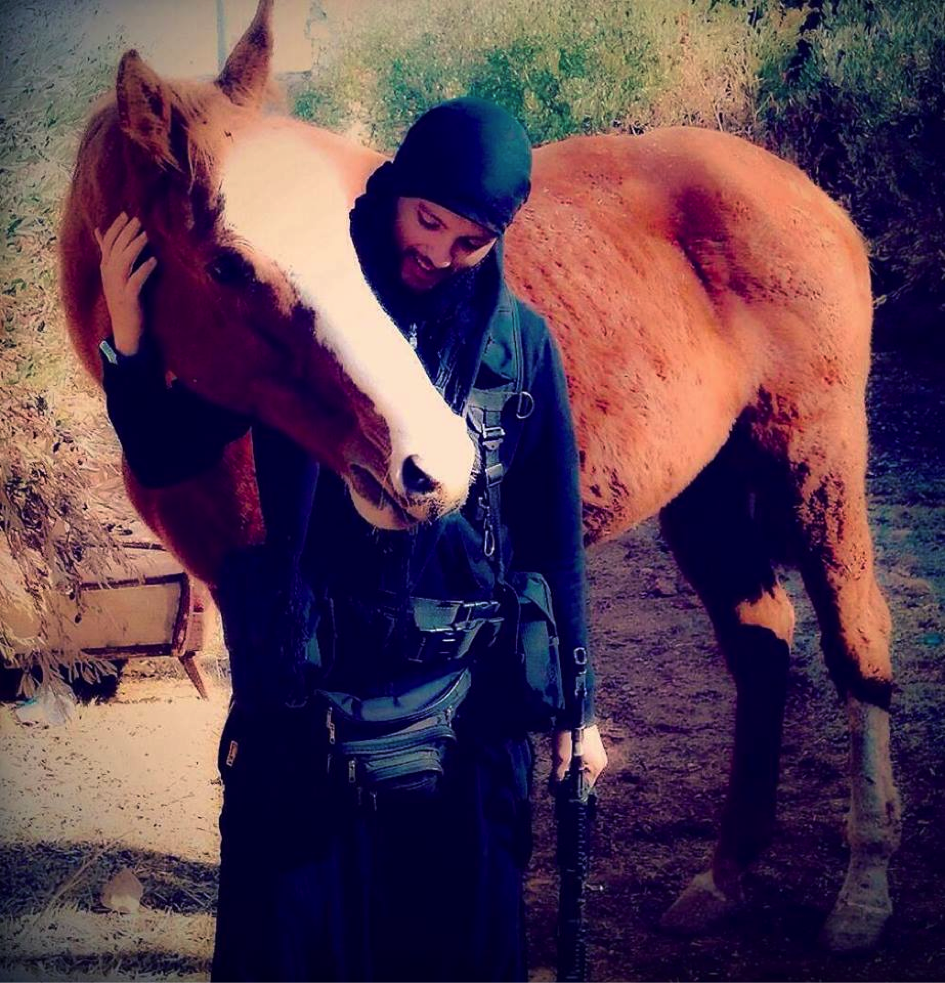

4. Younes (Michaël) Delefortrie
This Belgian convert from Merksem, Antwerp, is also known as Abu Usama al- Muhajir. He was a well known member of Sharia4Belgium. In 2011 he was arrested for possession of a Kalashnikov assault weapon. He was also part of the bunch in Aleppo, but when the Sahwa (the infighting between rebel groups) started, he left ISIS and fled home. He is currently under custody after he reported himself to the Federal Police. He claims he didn’t fight in Syria.

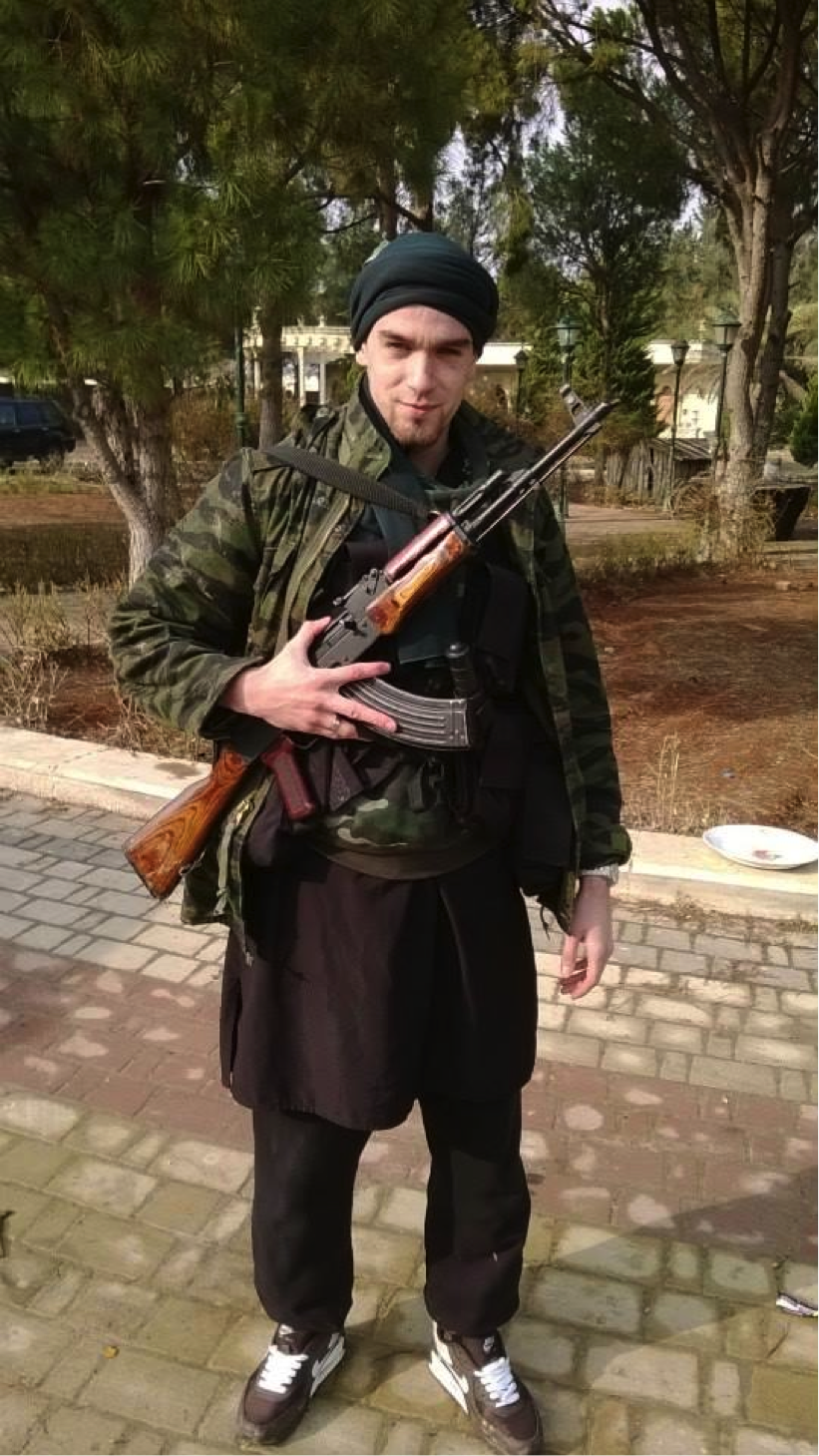
5. Abdel Monaïm
This 32 year old from Moroccon origin, also known as Abu Sara, was killed early in January 2014. He most likely was a victim of Syria’s Sahwa. According to the information available he was the father of at least five children. The mothers are two females from Brussels, one originated from the Congo; the other autochthonous. He was described as an adventurer rather than a hard-boiled Mujahid.
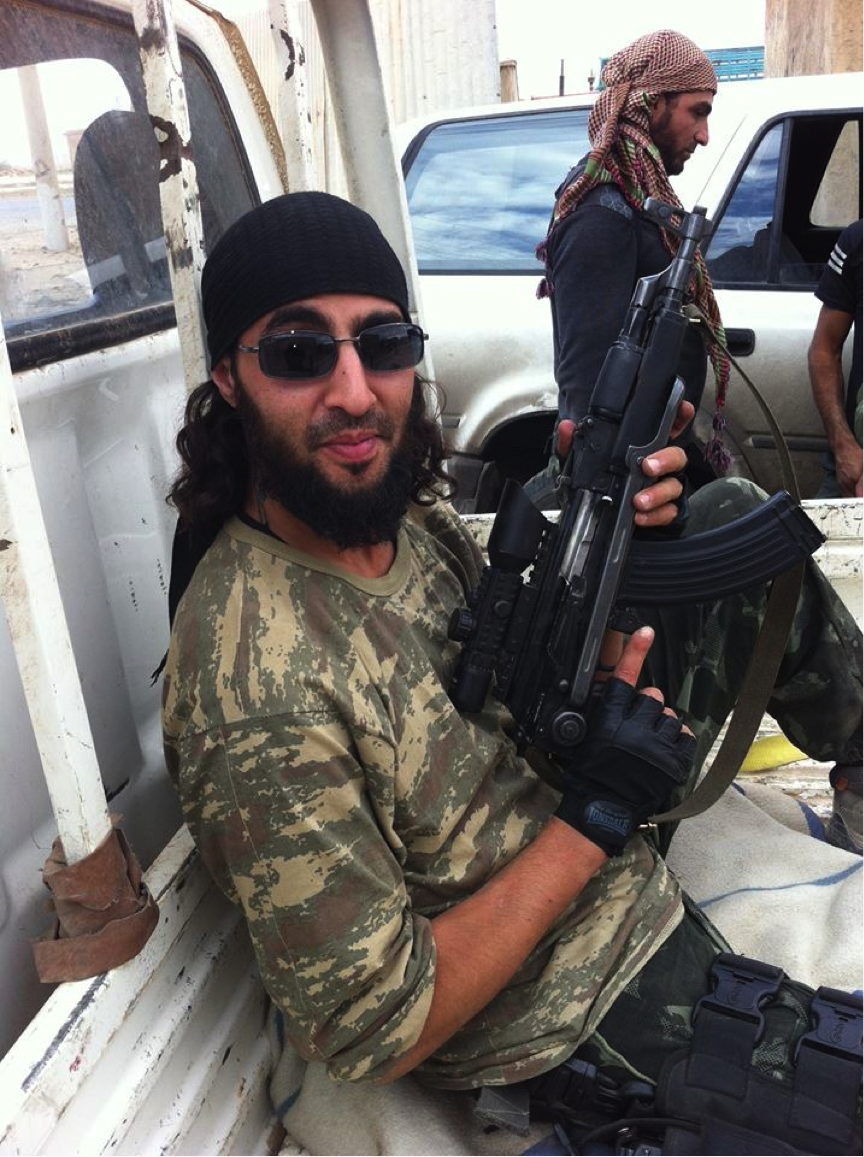
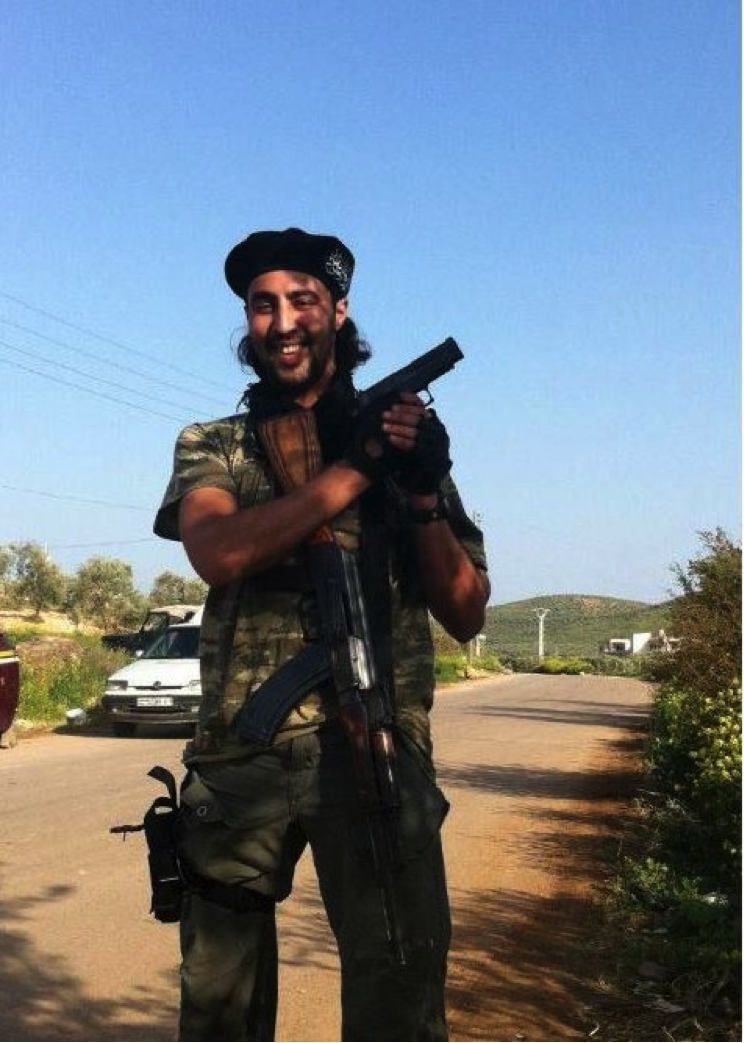
6. Abu Sulayman al-Baljiki
Being 36 he would be the oldest known Belgian member of ISIS. He as well lived in Brussels before leaving for Syria. He is active within a group of Franco-Belge fighters, who resided in Homs and currently in Aleppo-province. (On the far right in this pic)
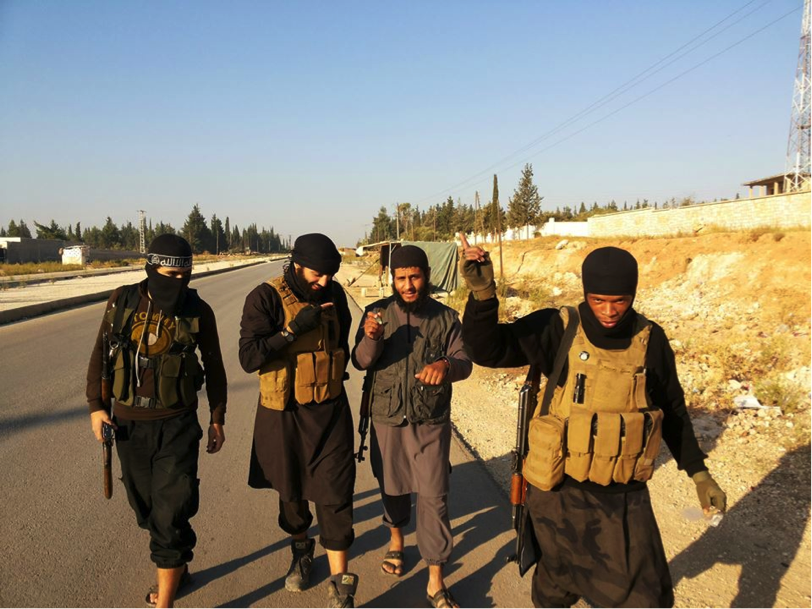
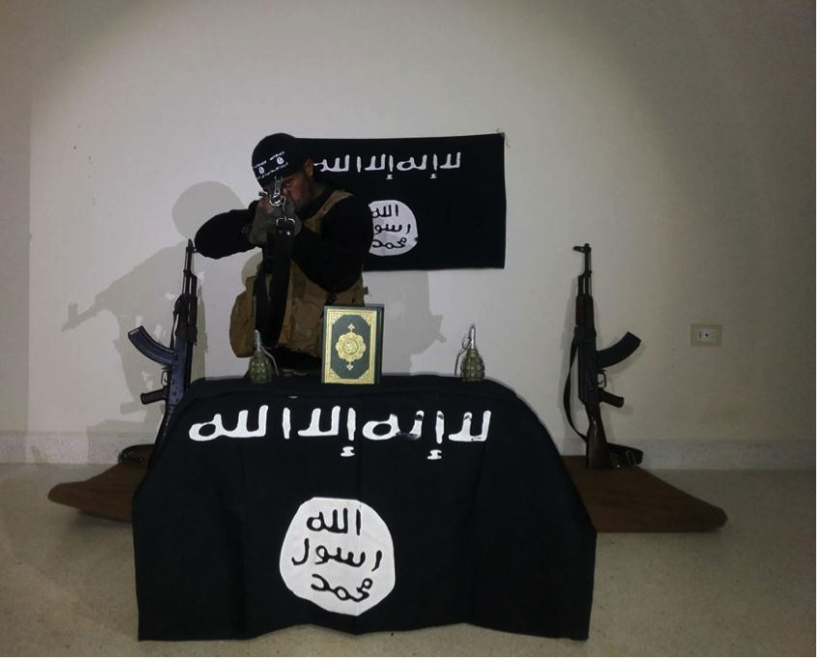
7. Abu al-Maqdad Muhajir
Also resides in a luxurious villa in Aleppo-province with some other Belgians. He originates from a Berber family in Morocco. He supposedly speaks Arabic, Dutch, and French; making him one of the polyglots among the Belgians in Syria.

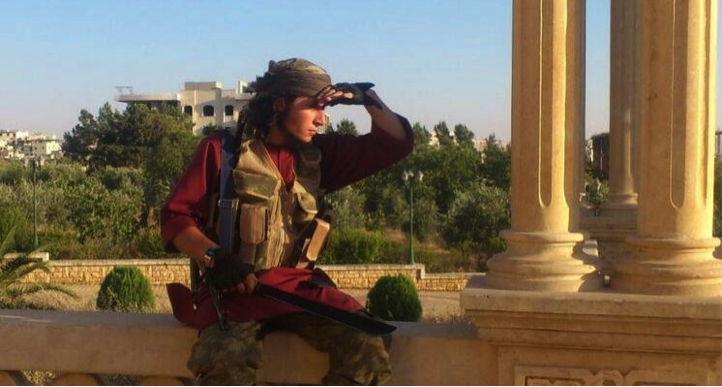
8. Abu Jihad al-Baljiki
A Sharia4Belgium member that choose for affiliation with Jabhat an-Nusra near Aleppo, unlike most of the others. His Facebook-account is gone; this might mean he is either killed and someone cleaned up the account, or he might be back in Belgium.
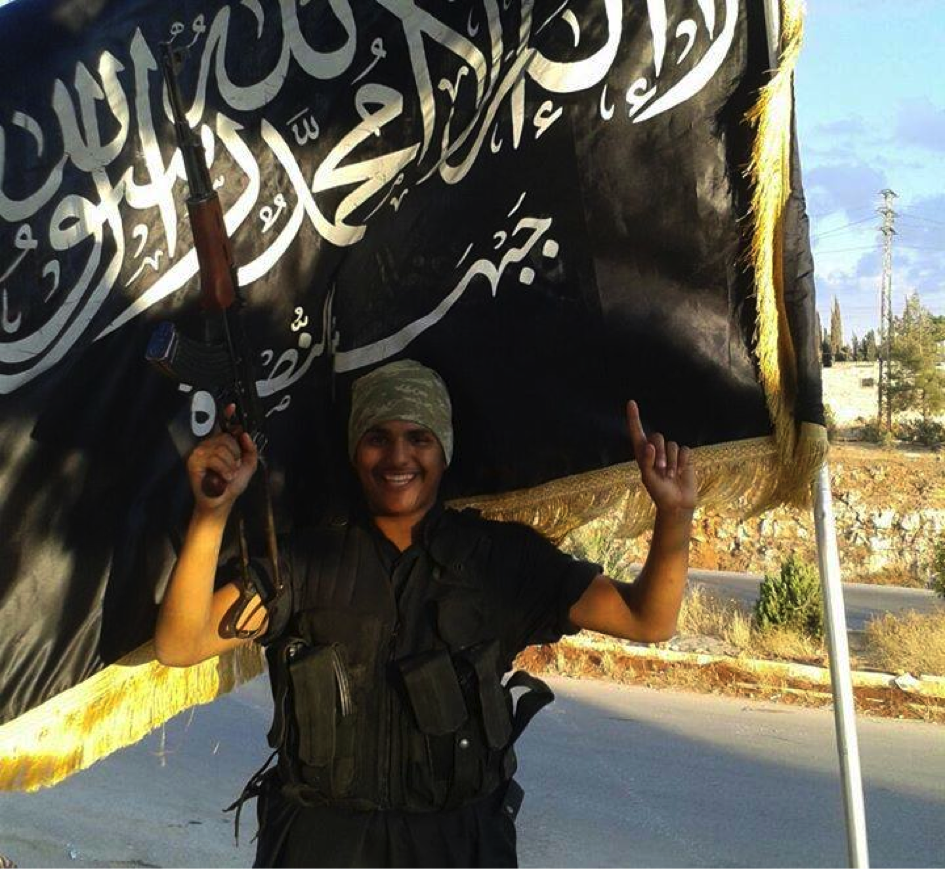
9. Ismail Mujahid
Ismail is most likely one of the youngest Belgian fighters in Syria being 17. He left for Syria on April 4th 2013 with his friend Bilal. His brother Zakaria (23) was already present at the time. His parents are divorced, the father lives in Brussels, mother in Vilvoorde. Bilal returned to Belgium after a few months, but Ismail remained in the ISIS villa in Aleppo.

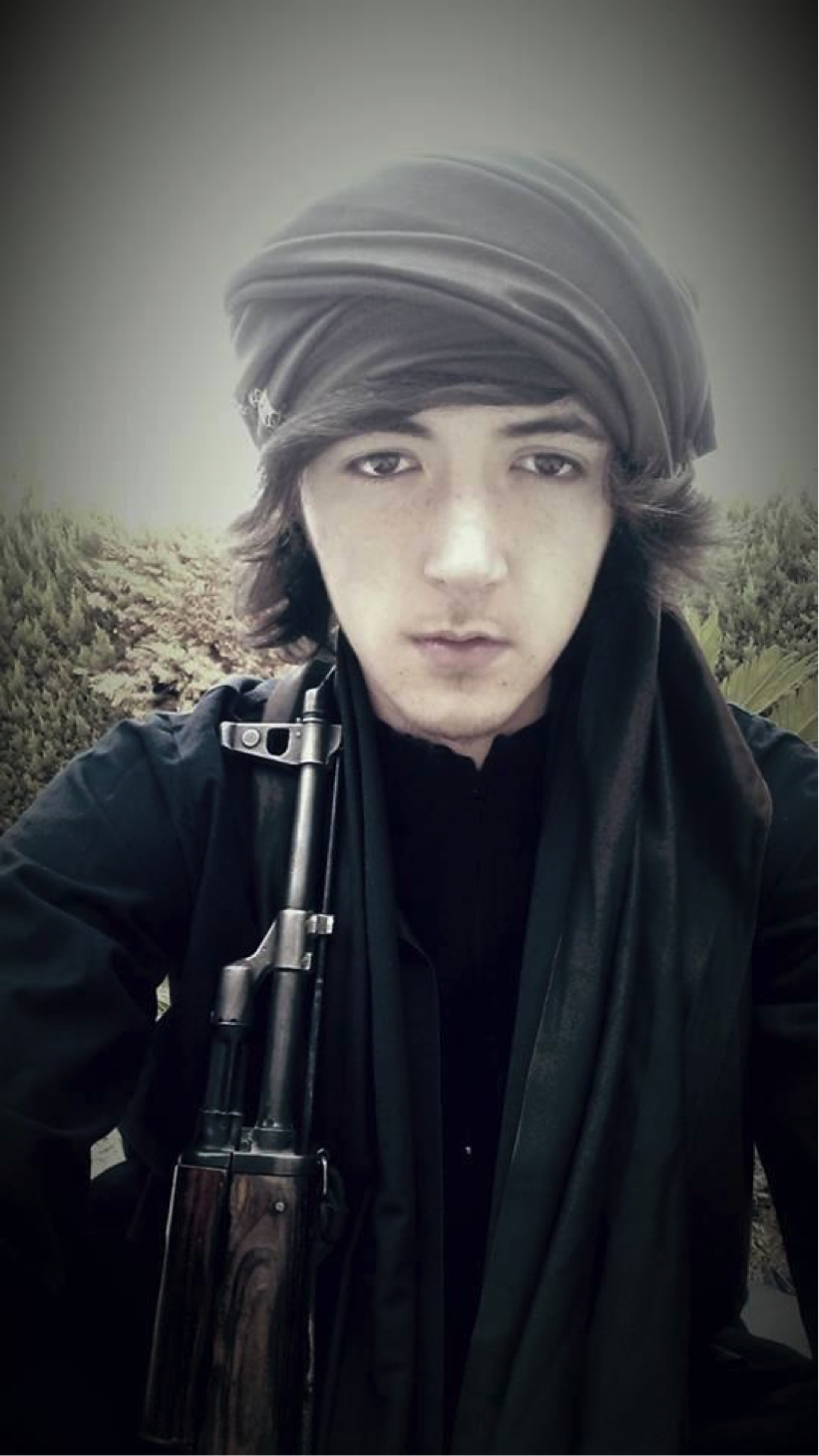
10. Hisham Chaib
Hisham is 30, originates from Antwerp. His Facebook-account says he is one of the Muhajirin as-Sham (an immigrant fighter in Syria). He was one of the bodyguards of Sharia4Belgium leader Fuad Belkacem (aka Abu Imran). Back then he was known as Abu Hanifa; he spent two months in prison because of his role in riots in Borgerhout, Antwerp earlier last year.
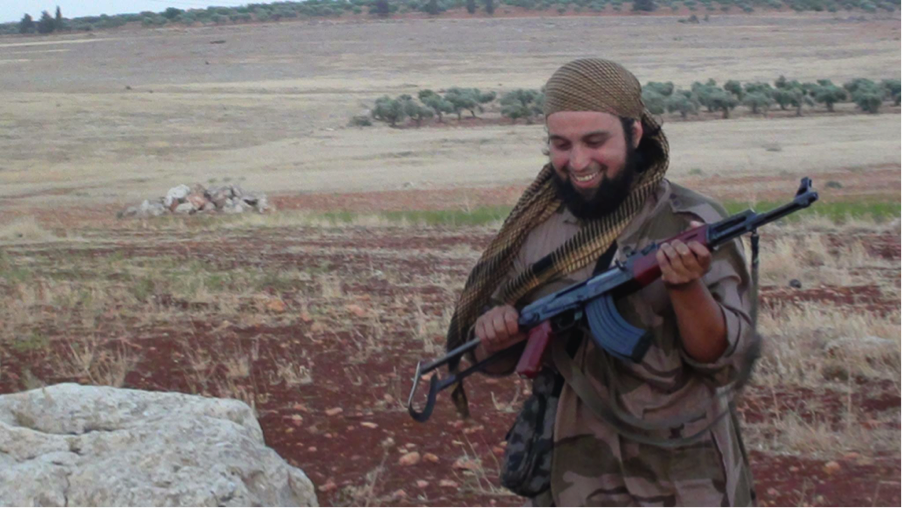
The Villa in Aleppo governorate where most of the Belgians reside:
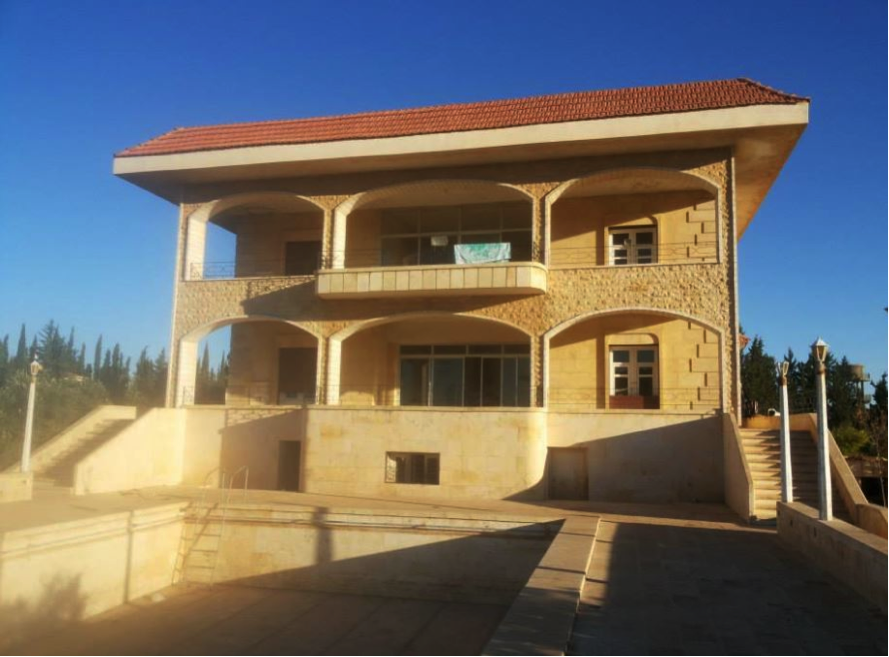
One last pic – The Royal Palace in Brussels:
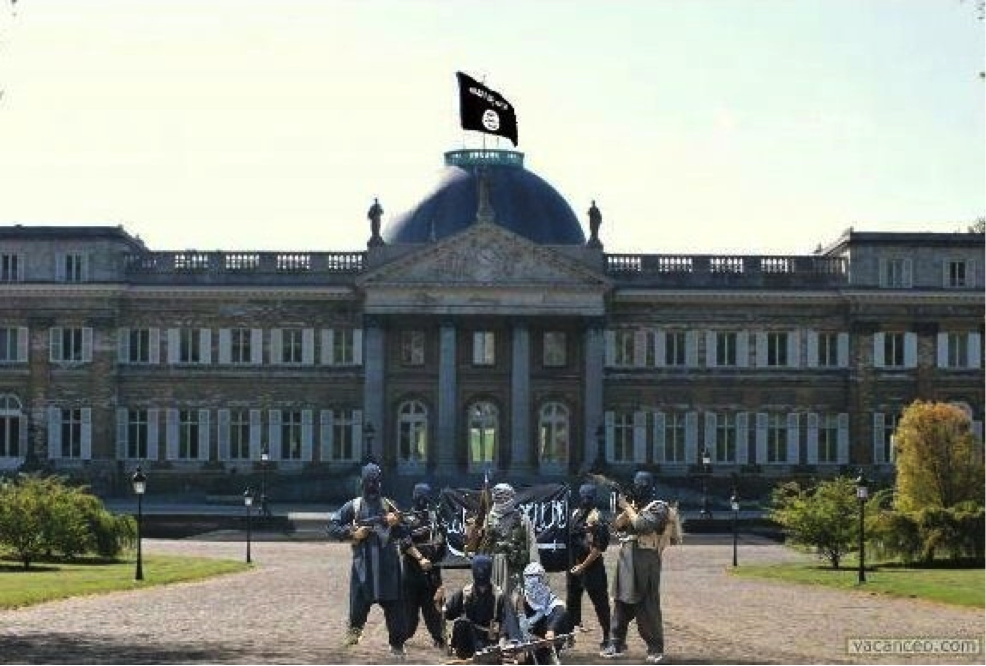
It starts making sense why Belgian officials and security forces in Belgium are getting edgy. Since we have elections coming ; this topic will play a role. More information about Belgian fighters is likely to get known in the next few months.
GUEST POST: Belgium’s Syria Fighters ~ An Overview of 2012 and 2013
NOTE: As with all guest posts, the opinions expressed below are those of the guest author and they do not necessarily represent the views of this blogs administrator and does not at all represent his employer at the Washington Institute for Near East Policy.
Jihadology.net aims to not only provide primary sources for researchers and occasional analysis of them, but also to allow other young and upcoming students as well as established academics or policy wonks to contribute original analysis on issues related to jihadism. If you would like to contribute a piece, please email your idea/post to azelin [at] jihadology [dot] net.
Click here to see an archive of all guest posts.
—
Belgium’s Syria Fighters ~ An Overview of 2012 and 2013
By Pieter Van Ostaeyen
It has been a while since I wrote my first contribution for Jihadology on the Belgian fighters in Syria. Since then, there has been a lot going on at the Syrian front. But also back at home things started stirring up. The Belgian government and local authorities reacted harshly when they found out their nationals were fighting in Syria. Back in the spring of 2013 it was thought that about 75 to 150 Belgians were fighting in Syria. The new numbers published by Aaron Zelin of the International Centre for the Study of Radicalisation on December 17th (here), showed that up to 296 Belgians were by then fighting in Syria. New revelations by the Belgian newspaper ‘Het Laatste Nieuws’ confronted us with more Belgian fighters involved in the Syrian conflict. Even Jihadi sources started reporting on the Belgian presence. This leads to the actual number of Belgians involved might even be higher than the previously estimated 296. It can be assumed that the actual number of Belgians that are or have been involved in the Syrian war is about 336.
We will deal with this matter in two parts; at first I will present an analysis of the numbers that we have at our disposal; the second part will deal with some new detailed cases of Belgian fighters, some of them present in Syria until today.
Part I : Belgian Foreign Fighters ~ The Numbers
Of the 336 cases found we identified 68 via traditional and “new”[1] media. The most known Belgian foreign fighters are by far Jejoen Bontinck and Brian De Mulder. Both are affiliated with Sharia4Belgium; Jejoen came back to Belgium (and was promptly arrested), Brian (recently sentenced to jail for dealing cocaine in his home town Antwerp) is still in Syria. When the first reports of Belgian fighters appeared early last year, officials immediately pointed out Sharia4Belgium; they were by far the group suspected of recruiting Belgian youngsters. At first, I admit, I doubted this claim, but as things evolved and more sources became available, we now know that at least 28 of the 68 mentioned were directly involved in Sharia4Belgium. 9 of this 28 person sample (8 men, 2 women) are known members of ISIS (The Islamic State in Iraq and as-Sham). At least one fights for Jabhat an-Nusra.
|
Total |
Identified |
Sharia4Belgium |
ISIS |
Jabhat an-Nusra |
|
336 |
68 |
28 |
10 |
1 |
If we exclude the alleged Sharia4Belgium-members we get a quite different picture. On group affiliation the information still is very scarce as we only know for less than 10 % of the cases involved.
|
Total |
ISIS |
Jabhat an-Nusra |
Suqur as-Sham |
Liwa Shuhada Idlib |
|
336 |
21 |
5 |
5 |
1 |
For some we also have an indication of their whereabouts; 17 out of 29 are in Aleppo province, 6 of them in Idlib. The youngest who left were five 16 year old boys from Brussels and Vilvoorde; there is some doubt whether one of them was actually 15 when he left. The age of the Belgian fighters ranges from 15 to 68 (if we include Sheikh Bassam al-Ayashi who lived in Brussels for years and currently resides in Syria). If we don’t add al-Bayashi’s age, the next in line is his son Abd ar-Rahman al-Ayashi and Raphael Gendron (both killed in clashes with regime forces at the age of 38). The average age of the Belgian fighters would be about 23.5. At least 17 minors went to Syria, about four returned. One of them got dragged back to Belgium by his mother. Ten of these minors are from the capital Brussels and the nearby city of Vilvoorde.
This brings us to the cities that seem to be “affected” by their citizens leaving for Jihad in Syria.[2] This topic is a bit controversial as some cities deny their inhabitants are connected with the Jihad in Syria. In our sample data we find 81 individuals from 8 different cities:
|
Brussels |
Vilvoorde |
Antwerpen |
Mechelen |
Genk |
Maaseik |
Willebroek |
Roeselaere |
Luik |
|
29 |
18 |
12 |
14 |
3 |
3 |
1 |
1 |
1 |
So it is clear that the capital Brussels is overrepresented when it concerns foreign fighters. Vilvoorde, Mechelen and Antwerp are next in line. Some loners seem to have left from Roeselaere (in the western part of Flanders) and from Luik (Liège in Wallonia). The majority of the Belgian fighters however are all from the axis Antwerp, Mechelen, Vilvoorde, and Brussels. If we plot these on a basic GoogleMap (with a little detour via Willebroek) this would be the result:
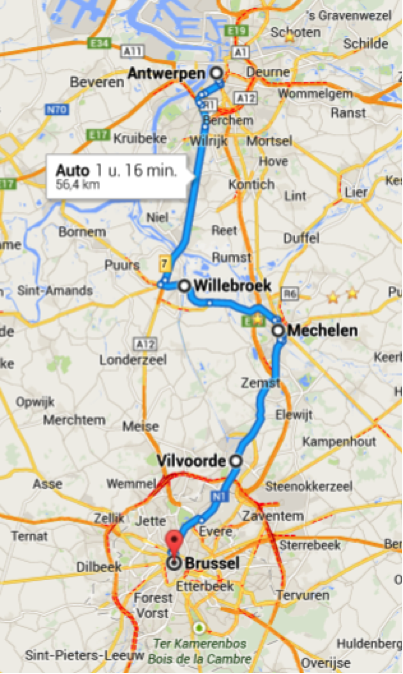
And indeed, the action radius of Sharia4Belgium stretched from Antwerp to Brussels.
The main concern of government officials is the return of these, once active, fighters to their hometowns. If we take a closer look at who returned we can conclude the following (based again on publicly available information); 28 at least have returned to Belgium from Syria (4 of them never reached Syria as they were arrested at the Turkish border). One of them, Hakim Elouassaki, was wounded in Syria and returned home for medical care. On January 23th some Belgian newspapers reported on two pregnant Belgian fighter’s wives being helped back home by the Belgian government. As both were married to known members of Sharia4Belgium their repatriation was probably conditional; return in exchange of information on the ones remaining in Syria.
Returned from Syria (by affiliation):
|
Sharia4Belgium |
ISIS |
Jabhat an-Nusra |
|
9 |
6 |
2 |
Returned from Syria (by city):
|
Antwerp |
Willebroek |
Vilvoorde |
Genk |
Luik |
Brussel |
|
6 |
1 |
5 |
3 |
1 |
1 |
The reported death-count thus far:
- 7 members of Sharia4Belgium
- 6 residents of Brussels
- 6 residents of Vilvoorde
- And at least one from both Maaseik and Mechelen
At this point it seems the Belgian fighters lost about 38 men and women since December 2012. A bit more than ten percent that is. But about 270 Belgian fighters are still there. A lot of information is yet to be disclosed.
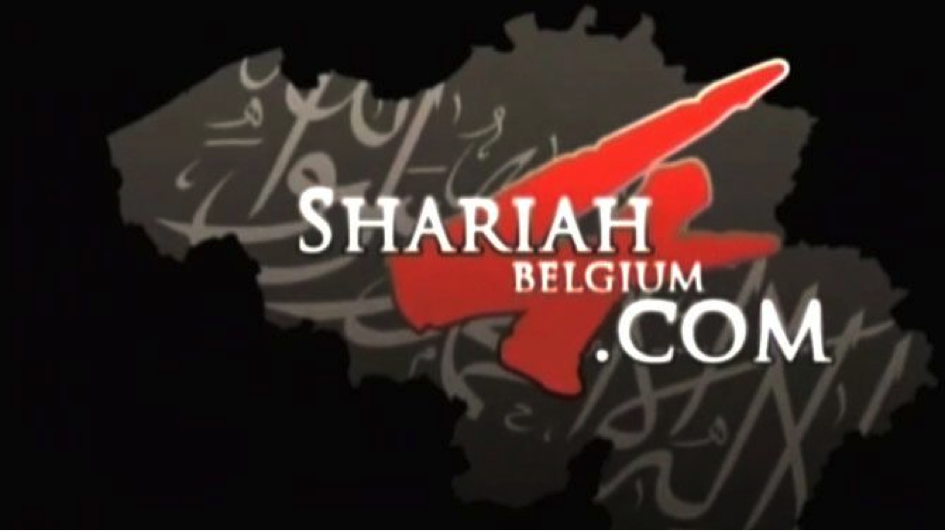
GUEST POST: Belgian Jihadis in Syria
NOTE: As with all guest posts, the opinions expressed below are those of the guest author and they do not necessarily represent the views of this blogs administrator and does not at all represent his employer at the Washington Institute for Near East Policy.
Jihadology.net aims to not only provide primary sources for researchers and occasional analysis of them, but also to allow other young and upcoming students as well as established academics or policy wonks to contribute original analysis on issues related to jihadism. If you would like to contribute a piece, please email your idea/post to azelin [at] jihadology [dot] net.
Past Guest Posts:
North Caucasus Caucus, “Turkish Fighters in Syria, Online and Off,” August 20, 2013.
Mark Youngman, “Book Review of David Malet’s “Foreign Fighters: Transnational Identity in Civil Conflicts”,” June 20, 2013.
Hazim Fouad, “Salafi-Jihadists and non-jihadist Salafists in Egypt – A case study about politics and methodology (manhaj),” April 30, 2013.
Daveed Gartenstein-Ross and Tara Vassefi, “Perceptions of the “Arab Spring” Within the Salafi-Jihadi Movement,” November 19, 2012.
Jack Roche, “The Indonesian Jamā’ah Islāmiyyah’s Constitution (PUPJI),” November 14, 2012.
Kévin Jackson, “The Pledge of Allegiance and its Implications,” July 27, 2012.
Behnam Said, “A Brief Look at the History and Power of Anasheed in Jihadist Culture,” May 31, 2012.
Jonah Ondieki and Jake Zenn, “Gaidi Mtaani,” April 24, 2012.
Joshua Foust, “Jihadi Ideology Is Not As Important As We Think,” January 25, 2011.
Charles Cameron, “Hitting the Blind-Spot- A Review of Jean-Pierre Filiu’s “Apocalypse in Islam,” January 24, 2011.
Daveed Gartenstein-Ross, “Why Jihadi Ideology Matters,” January 21, 2011.
Joshua Foust, “Some Inchoate Thoughts on Ideology,” January 19, 2011.
Marissa Allison, “Militants Seize Mecca: Juhaymān al ‘Utaybī and the Siege of the Grand Mosque in Mecca,” June 9, 2010.
—
Belgian Jihadis in Syria
By Pieter Van Ostaeyen
Belgium always had a bit of a dual relationship with its numerous immigrants from the Maghreb and Turkey. In the 1960’s Belgium heavily encouraged migration from Morocco and Turkey. They were seen as cheaper work forces for the steel and coal industry, which made Belgium a crucial part of the precursor to the European Union and the integration of European economies.
When the heavy industry faded though, these immigrant families remained in Belgium. Currently, some of the third and fourth generation of these immigrants are people who live on the margins of society. The Belgium government over the last several decades never really succeeded integrating the Islamic communities. In the late 1980’s and 1990’s Moroccon youth were renowned for crimes like drug-dealing, theft, and many of them were jobless yet drove around in big cars like Mercedes and BMW.
In one manifestations of the inability to integrate (or the lack of will to do so by some) during the last few decades, led to the creation of the Salafist movement Sharia4Belgium on March 3 2010. Their spokesman Fouad Belkacem (aka Abu Imran) was soon branded persona non grata on public fora. Under heavy public pressure and after several judicial actions against the group, Sharia4Belgium dissolved itself on October 7 2012.

Photo 1: Fouad Belkacem, spokesman of Sharia4Belgium
Meanwhile the war in Syria had been raging for about a year and a half. Reports started appearing claiming European Muslims were fighting in Syria. It would only take a couple of months before the first Belgian and Dutch jihadis were identified. On February 16, 2013 another horrible video from Syria (first published by @hlk01) was posted. There was Dutch heard in the video. Later that week, the Dutch newspaper De Telegraaf, published an article claiming that Dutch security forces (AIVD) were already investigating the matter.
On March 7, Eurojust first confirmed that there were Belgians amongst the European jihadis in Syria. On March 15 and 16, 2013 Harald Doornbos and myself found three YouTube videos (originally posted by Halab News Network and since deleted by Google) in which I clearly heard some Flemish guys. Belgian media later picked up on this story. Later, the parents of Brian De Mulder and Jejoen Bontinck recognized their sons in the videos. The Belgian far right extremist party Vlaams Belang succeeded in luring in one of the families for their own propaganda and the father of Bontinck even went to Syria in search for his son. They all blamed Sharia4Belgium.
Since then reports about the Belgian jihadis appeared weekly. On April 10, 2013 the Belgian weekly magazine Knack published an article on the Belgian jihadis in Syria, claiming that already 12 of them were killed (these reports as of today remain unconfirmed). Here is an overview of those who died fighting in Syria or those who got arrested trying to get there.
On the 22nd of June, Belgian newspapers De Standaard and De Morgen gave an extensive overview of the developments concerning Belgian jihadis in Syria. This is all because of the announcement of the death of ‘Abd ar-Rahmān Ayāshī, a French-Syrian who had left Belgium back in 2012 after he was sentenced to 8 years in jail. ‘Abd ar-Rahmān Ayāshī became a battalion-leader of Suqūr as-Shām, leading about 600 in battle.

Photo 2: ‘Abd ar-Rahmān Ayāshī
Ayāshī was the son of the Sheikh Bassām Ayāshī, a Syrian living in Molenbeek, Brussels. In the past the Ayāshī family was suspect to several investigations by the Belgian authorities (since September 2009).
A few months ago, the friend of Ayāshī, the French Raphael Gendron (at the right on this pic) was killed in Syria. Perhaps he was one of the first “Belgian” jihadis that got killed in Syria.

Photo 3: ‘Abd ar-Rahmān Ayāshī and Raphael Gendron in Syria
In this video Sheikh Ayāshī reacts to the death of his “two” sons in Syria.
Here is a very recent interview with the killed battalion leader published on YouTube on June 23:
[youtube https://www.youtube.com/watch?v=-lu9WFBEsrg&sns;feature=youtu.be]
There is no doubt that the deaths of Gendron and Ayāshī are the biggest losses among Belgian fighters in Syria.
Others proven killed are:
- Sean Pidgeon (Brussels)
- Tāriq Taqlitūn (Vilvoorde). He was killed in his apartment in Syria. His Belgian wife says he was allowed to pray one last time and then got executed.
- According to Hans Bonte, mayor of Vilvoorde, at least two other (unidentified) youngsters from his city got killed recently
- Another death in the ranks of Sharia4Belgium in Syria is Nur ad-Din Abouallal aka Abu Mujahid, allegedly killed in Syria around the 25th of July. His death was reported by his Belgian wife.

Photo 4: Nur ad-Din Abouallal aka Abu Mujahid, Sharia4Belgium’s second man
- August 21: Isma’il Amgroud, 22, Maaseik, Belgium. He left Maaseik early April and died in Syria in late June. He was the youngest of three who left Maaseik to fight in Syria. All of them were officially deleted from civil registrations.
- August 22: Three inhabitants of Genk are arrested at the Greek-Turkish border. One of the arrested was a 26 year old Italian, who converted to Islam. One of the other men arrested was most likely his father. They returned to Genk and are under supervision of the authorities.
- August 28: Hans Bonte, Mayor of Vilvoorde, in an interview in Belgian newspapers, claims that at least 25 youngsters from his city left or will leave for Syria.
Others still fighting in Syria:
- About 33 members of the group Sharia4Belgium. Best known: Jejoen Bontinck, Brian De Mulder (both from Antwerp), and Hussayn Elouassaki aka Abu Fallujah (supposed leader of the Ansār Brigade of Majlis Shūra al-Mujahidīn near Aleppo – accused of a gruesome beheading)
- About 150 to 200 Belgian fighters
As most research during the last half year pointed out it is believed that some Belgians joined Jabhat an-Nusra although most of them first aligned with Majlis as-Shura al-Mujahidin (currently a sub-group of ISIS) or Katībat al-Muhājirīn (led by the Chechen Jihadi Abū ‘Umar as-Shīshāni and recently merged with two other groups into Jaysh al-Muhājirīn wa-l-Ansār). Most Belgian jihadis appear to be fighting in or near Aleppo and Idlib. According to recent Belgian reports most of them were based in the village of Daret Izza in the Northern Aleppo province.
It is highly likely that as the Syrian conflict continues to go on there will be more fighters that will join up with the rebels. The Belgian government is worried for their return due to the possibility these newly trained fighters could then plot attacks on the homeland.
Pieter Van Ostaeyen
Master Medieval History 1999
Master Arabic & Islamic Studies 2003
